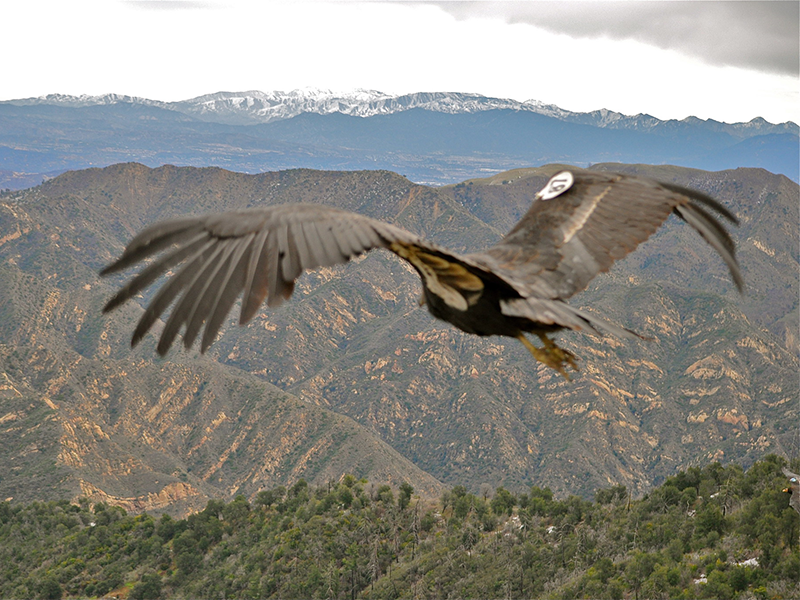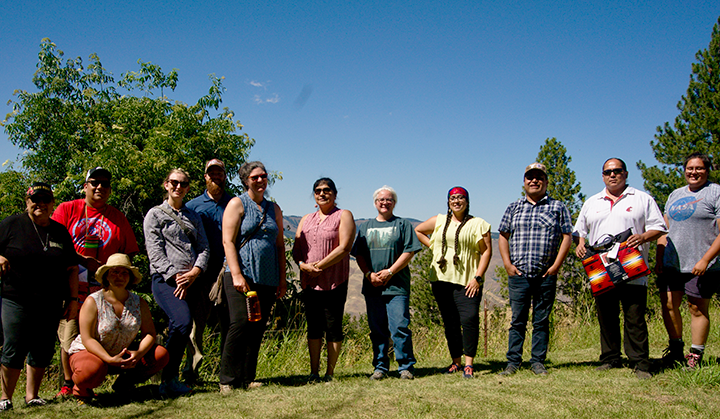Indigenous-led ‘Camas to Condors’ project supports climate resilience in northeastern Oregon
The camas plant, that grows in wetlands and produces a beautiful, deep-purple flower, and California condor, a gigantic vulture, represent the resilience of ecosystems the Nimíipuu (Nez Perce people) have lived in, stewarded, and depended upon since time immemorial.
However, the absence of keystone species such as condors from these landscapes and the loss of wetland habitat for camas has impacted cultural survival of the Nimíipuu, and an ecosystem’s resilience to climate change.
That’s why camas and condors are the focal species of a landscape-scale climate resilience initiative in the northeastern Oregon watershed of Joseph Creek — a stronghold for wildlife containing some of the last large intact (but unprotected) wildlands in the Pacific Northwest.
The Camas to Condors (C2C) initiative is a collaborative Indigenous-led conservation initiative between the Nez Perce Tribe, university, and non-profit partners. Thanks to your support, Y2Y is thrilled to be one of those partners.
The lands straddling Joseph Creek contain potential sites for the Tribe’s proposed reintroduction of the critically endangered, slowly recovering California condor, and restoration and protection of prairies and wetlands that support root foods such as camas.

In Nez Perce language, this canyon is named after nesting condors, and elders remember stories about condor nests in the canyon. Nimíipuu people continue to live in and steward this landscape, through traditions and connections rooted in place. In Nez Perce Language condor is Qu’nes and camas is qem’es.
By invitation, Y2Y and partners hosted a field tour in July 2022 for four members of the Nez Perce Tribal Executive Committee to showcase this project and seek their support and feedback.
Looking out over the vast landscapes of the Joseph Canyon, the group discussed what is needed to safeguard and strengthen this ecosystem — steps already being taken by the Nez Perce, and future actions needed. They talked about connectivity, climate adaptation, condor recovery, workforce development, and connecting people and the land through culture.

Jessie Grossman, Y2Y’s U.S. program manager, was present. “Getting to share this project with the elected leadership of the Nez Perce Tribe was an honor. Y2Y is grateful to support this important work being led by Indigenous People to reconnect with their homelands and safeguard Nez Perce culture in the face of climate change,” she says.
This initiative will help provide a model for centering Indigenous Peoples’ Knowledge and practices in conservation and help ecosystems adapt to the changing climate.
Listening to, and learning from the landscape will be a key part of healing these landscapes for plants, wild animals, and people.
Your support helps progress this important work. Thank you.
This project is made possible with funding from: Mosaic, a project of The Tides Center; Wildlife Conservation Society Climate Adaptation Fund, supported by the Doris Duke Charitable Foundation


